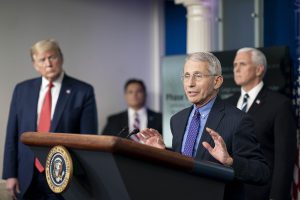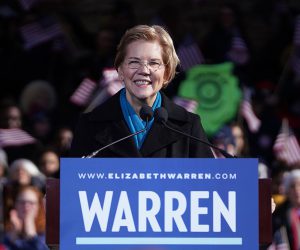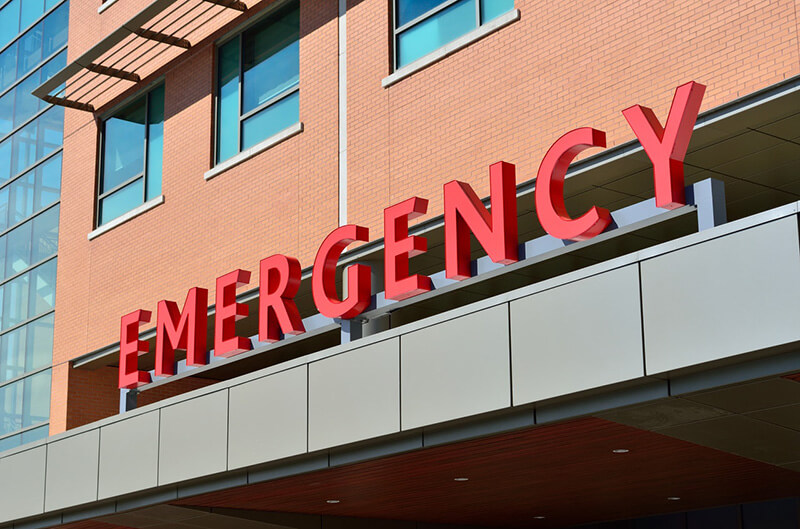A date firmly etched in history, September 11, 2001 was a moment that led many young Americans to reconsider the importance of serving their country.
In the year after the horrific terror attacks on New York and Washington DC, more than 180,000 Americans enrolled for active duty service in the four branches of the United States military. Nearly 73,000 others joined the enlisted reserves.
Interest in joining the military increased eight percent, with many recruits saying they joined as a direct response to 9/11.
“Prior to that event, I never considered joining the military,” U.S. Army Major. Tatchie Manso, who was a 20-year-old college student in New York in 2001, told the USO this September.
“It was at that moment I realized that there was something I needed to be part of that was greater than myself.”
Nearly 3000 died on 9/11, and from illnesses caused by dust exposure since. With positive cases spiking again in the weeks following Thanksgiving, close to the same number are now dying every two days due to Covid-19 (more than 284,000 Americans have now died during the global pandemic, this year).
During Covid-19, my hunger to help continues to grow. I want to be a change agent to bring equitable, effective care to my community.
While the initial time frame—and eventual scale—of the two events differ greatly, the pain felt in 2020 has again seen young Americans reflect on how best they serve those around them.
This year, it appears the medical industry has been rewarded from that urge to give something big back.
According to the Association of American Medical Colleges (AAMC), med school applications in the U.S. are up 18 percent for next year’s first-year students, with one top college attracting nearly triple the national rate.
While the COVID-19 crisis has clearly had an impact, it is uncertain how much of it is a truly inspired medical call to arms, or the stark reality that healthcare now commands more than a sixth of the entire U.S. economy, with med school applications up 33 percent since 2002, anyway.
The bigger question is likely if medical education—especially a residency system held back by a federal funding cap—is able to effectively manage the first big med school influx of those born after 9/11.
“So far in my lifetime, at least, and for as long as I’ve been in medical education,” Geoffrey Young, the AAMC’s senior director for student affairs and programs, told NPR, “that’s the only comparison that I could make.
The numbers and the challenges
According to NPR, Stanford University School of Medicine has seen a 50 percent leap in applications, with more than 11,000 for just 90 places. Tulane University School of Medicine in New Orleans has seen applications rocket up by more than a third, while Boston University School of Medicine has reported a 27 percent increase in applications.
“We’ve been experiencing a leveling off in recent years, so the large increase was quite surprising,” Gabrielle Campbell, the AAMC’s chief services officer, says. Over the last ten years, the year-to-year increase has hovered around three percent.

“That, I think, may have a lot to do with the fact that people look at Anthony Fauci, look at the doctors in their community and say, ‘you know, that is amazing. This is a way for me to make a difference,’” Kristen Goodell, associate dean of admissions at BU’s med school, says.
Despite being sidelined by the White House, Dr. Fauci—the head of the National Institute of Allergy and Infectious Diseases (NIAID)—has been a constant media figure throughout the COVID-19 pandemic in the U.S.
An energetic presence, he has often been an island of pragmatism during a year of frequent public health disinformation, sensation, and punditry. Until the early summer, Fauci regularly spoke about the pandemic at White House press conferences.
Concurrently, many of this year’s med school hopefuls already had their American Medical College Application Service (AMCAS) applications in, before completing their chosen schools’ own secondary applications. Most are now waiting for interview invitations, which may happen as late as April or May next year.
Despite the massive uptick in prospective med students, class sizes will not change, but a number of schools are adapting the initial application and interview period.
The AAMC says some will “enlist extra reviewers, take more time to process submissions, and add interview slots,” while others are taking longer to extend interview invites.
Taking advantage of the increased capacity of virtual meetings, Texas A&M Health Science Center College of Medicine, in Bryan, Texas, is adding more interviews, as well as extending the initial, Covid-19-affected application period.
Barriers, and potential solutions
Even for those eventually accepted into medical school this coming year, a shortage of residency slots could prove another hurdle into a medical industry desperate for their participation.
According to the National Resident Matching Program, 40,084 MD and DO graduates applied for 37,256 residency spots last year. The earlier figure represents a record-high amount of those pursuing residencies, while the amount of first-year residency spots being offered went up more than six percent in 2019.
In September, the AAMC reported that 44 percent of schools reported “major or moderate” concerns about their students’ chances of finding residency spots of their choice. They say the number has “held steady” for three years.
U.S. residency numbers are largely limited by a congressionally-agreed cap on government funding for graduate medical education (GME), which is funded through Medicare.
Medicine is not something you can cookbook your way through.
Introduced in 1997 as part of President Bill Clinton’s Balanced Budget Act, the cap held a hospital’s ability to support residents at the previous year’s levels. The Act was endorsed by the AAMC, with the residency freeze then considered temporary.
“At the time, everyone’s idea was that [residency funding] was going to be put on hold for a year or two, then reassessed,” Dr. Janis Orlowski, AAMC’s Chief Healthcare Officer, told the Washingtonian, in April. “[I]f you look at the testimony, it’s very clear.”
The GME funding cap has remained ever since. While some see cap’s problems as a “myth”, others worry it creates an unnecessary “bottleneck” in a healthcare industry that could be short at least 54,000 doctors in 2033. Calls for visa reform or an increased recognition of non-U.S medical education to help immigrant doctors fill shortages in America have, so far, fallen on deaf ears.
“We’re just bumping up against it now,” Orlowski says, about the GME cap.
“Before, there was a gap [between American medical students and the cap limit]. That gap was filled by international medical graduates. So if you take a look at the U.S. right now, about one out of five physicians is foreign-born.
“We essentially have had to count foreign doctors coming to the United States in order to continue to grow our healthcare delivery system. And now our American number of graduates is bumping up against that cap.”
Higher levels of population growth will see some states hit worse than others. California, for example, is likely to include an outsized portion of the overall physician shortage, by 2030.

Though following previous attempts that floundered, legislation was introduced in both the House and Senate last year with broad bipartisan support. While running for President, Senator Elizabeth Warren, a Democrat from Massachusetts, said she would lift the cap.
With President-elect Biden making healthcare reform a cornerstone of his winning campaign, legislation that passes through both the House and Senate will definitely be signed when he’s in the Oval Office.
Changes to residency infrastructure will need to be matched with an incentive for newly-minted physicians to practice in rural America.
U.S. medical deserts are vast, with lower population counties suffering from increasing health problems, overworked, aging doctors, and the continuing closures of small town hospitals. The Covid-19 pandemic has exposed many of the issues.
Initiated last year by the Trump administration, a new 21-state program that received $20 million in federal grants to bring more future physicians into rural residencies is a start.
Over recent years, Missouri, Utah, Arkansas, and Florida have attempted to bypass the residency bottleneck. The four states have introduced ‘assistant physician licenses’ that allow some medical graduates to practice in underserved areas, without serving a residency first.
The approach has faced staunch opposition, with one critic describing it as “dangerous” for both young doctors, and patients.
“Medicine is not something you can cookbook your way through,” Dr. Gary LeRoy, president of the American Academy of Family Physicians told Medscape Medical News, in July.
The way forward
“During COVID-19, my hunger to help continues to grow,” Houston’s Alan Mauricio De Leon told AAMC in October. A recent med school applicant, De Leon will potentially be one of this year’s potentially historic incoming class.
“I want to be a change agent to bring equitable, effective care to my community.”
Beyond overdue structural changes, this year’s encouraging numbers of med school applicants clearly lit a windowside candle during a year of constant, agonizing challenges within medicine.
… a more realistic assessment is that, rather than the Fauci Effect, it’s the effect of a physician who is trying to and hopefully succeeding in having an important impact on an individual’s health, as well as on global health.
When asked what he thought of the idea of a ‘Fauci effect’, the public health icon himself perhaps summed it up best.
“Probably a more realistic assessment is that, rather than the Fauci Effect, it’s the effect of a physician who is trying to and hopefully succeeding in having an important impact on an individual’s health, as well as on global health,” he says.
“So if it works to get more young individuals into medical school, go ahead and use my name. Be my guest.”



